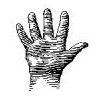Skin Cancer Screening
When caught early, most skin cancer is very treatable. To maintain good skin health, most people should have their skin examined by a professional every year.
If you have health insurance, call (520) 694-2873 or:
If you do NOT have health insurance:
If you live outside the Tucson area, find out about free skin cancer screenings that may be offered in your area at the American Academy of Dermatology.

Early Detection
Please check out this 12-minute video, "Skin Cancer: Learn to Spot it Early," a collaborative effort of the University of Arizona Cancer Center Skin Cancer Institute, the College of Nursing and the Learning Technologies Center's Media Services unit. In a study done on the effectiveness of the video, participants who watched it had highly significant increases in self-reported melanoma awareness and skin self-examination: "An Internet-Delivered Video Intervention for Skin Self-examination by Patients With Melanoma." ![]() sse_article.pdf
sse_article.pdf
What to look for
Most skin cancers are treated successfully if they are caught early. Knowing your skin is key to early detection. Know your ABCDEs. Look carefully at the freckles, moles and birthmarks on your skin. Look for any changes in spots you already have and any new spots that develop. Use the "ABCDE" rule to help you remember what to look for when examining your skin:
 |
Asymmetry: One half of a spot does not match the other half. |
 |
Border irregularity: Edges are ragged, notched, irregular, or blurred. |
 |
Color: The color is not the same throughout or it has shades of tan, brown, black, red, white, or blue. |
 |
Diameter: The spot/mole is greater than 6 millimeters (¼”) in size, about the size of a pencil eraser. |
 |
Evolving: Spots that show any of these changes over time: Size, shape, shades of color; sensation (itching or tenderness); surface bleeding. |
How To Perform A Self-Examination
Skin self-examination is as important as other forms of self-examination, such as that for breast cancer or testicular cancer. Skin cancer survival rates are much higher if the cancer is found in an early stage. Both men and women should examine their skin once a month to look for any changes in moles and other spots on their skin or new spots.
You'll need a:
- well-lighted room
- full-length mirror
- hand mirror
- chair/stool
 |
Examine your head and face in the mirror. Check your scalp and around your hairline. It may be helpful to use a comb to help part the hair so you can see the skin underneath. |
 |
In a full-length mirror, examine elbows, arms and underarms. Don’t forget to look in the folds of your skin, including the skin under breasts. |
 |
Look down at the front of your upper body checking your arms, shoulders, chest and stomach all the way down to your waist. |
 |
Look at your hands. With your fingers spread, check the tops of your hands and fingernails. Then, turn your hands over and check your palms. |
 |
With your back to a full -length mirror, use a hand mirror to inspect the back of your neck, ears, shoulders, upper arms, back and buttocks. |
 |
Sit down to check your legs and feet, including soles, heels, and toe nails. Use the hand mirror to examine the backs of your thighs, calves and genitals. |
If you find something unusual on your skin that doesn't go away, see your dermatologist or healthcare provider.


